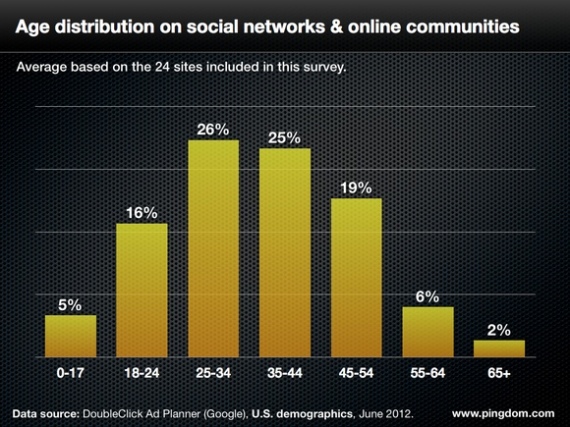 [tweetmeme]You’ve probably started hearing the terms “Gamification” or “Game Mechanics” in increasing frequency in your corporate hallways of late. This is especially so if I’ve been working with you, as Gamification theory and practice (not to be confused with the Economics based “Game Theory”) is quickly becoming a cornerstone of the next generation of highly engaging collaborative Innovation programs.
[tweetmeme]You’ve probably started hearing the terms “Gamification” or “Game Mechanics” in increasing frequency in your corporate hallways of late. This is especially so if I’ve been working with you, as Gamification theory and practice (not to be confused with the Economics based “Game Theory”) is quickly becoming a cornerstone of the next generation of highly engaging collaborative Innovation programs.
I probably get asked about Gamification (aka the application of Game Mechanics/Game Design to a particular system, process, or program) at least once a day now – Spigit has quite the reputation for incorporating Gaming Mechanics into its product design – and the Collaborative Innovation consulting practice I run at Spigit has now also pioneered the development a host of new techniques and methods to apply Game Design techniques into the successful design and execution of various types of challenges, communities and collaborative competitions with some quite astounding results.
Done properly, it’s probably one of the greatest tools in a Social Strategist’s arsenal – giving great insight into that hallowed (and much overused) word “Engagement”. Yet as a topic it’s rarely understood – and even more rarely applied – properly by most including those claiming to be in the field.
First and foremost, let’s tackle some of the misconceptions:
 – Gamification is NOT the same as Social Gaming. Whilst popular games like Farmville, Cityville, etc incorporate gaming techniques and could in themselves be the end result of the Gamification process – Gamification itself is a much bigger subject matter.
– Gamification is NOT the same as Social Gaming. Whilst popular games like Farmville, Cityville, etc incorporate gaming techniques and could in themselves be the end result of the Gamification process – Gamification itself is a much bigger subject matter.
– Gamification IS a Social process
– Gamification IS a design methodology – it’s about how you incorporate Game Mechanics into a system to make it more ENGAGING .
– Gamification is NOT about specific technology features and functions. Buying Bunchball, Badgeville, or any of a host of new companies cashing in on the Gamification trend and blindly incorporating their software into your website does not make you a Gamification King.
The key to comprehending why Gamification is so important to businesses in the future – is understanding that that there is something incredibly and intrinsically addictive about a well-designed game that engages us as humans at the very core of our beings.
At some point in our lives, we’ve all been deeply engrossed in board games, video games, or what have you – looked up at the clock, seen it was 1AM and uttered the words “Crap, how did that happen?”
A good game not only engages us, but it physically and emotionally satisfies a part of us. Left alone we will create games from whatever we have around us (“I spy with my little eye…”).. We actively WANT to, and some might even say need to, play games.
Given options, we will choose to spend time playing games above all other activities We will even PAY to play a good game – and we have whole cities designed to cater to our desire to play games!
What if we could capture the mechanics that make a good game so addictive to us, so engaging, and bring those into a business system that actively creates value for the company? THAT’s the real promise of Gamification.
Games come in many forms though – some very obvious (Monopoly, Blackjack, World of Warcraft. etc) , and others not so (political games, dating games, etc).
In fact, if you think about it – we are actually surrounded by games all around us everyday, although most of the time we don’t necessarily perceive or think of them as being games.
For example – take your morning commute – you get up and leave the house with the aim of getting to work on time. There’s a path to follow, and there are choices along that path:
– Do you decide to drive or to take the train?
– If you drive, which route do you take?
– Do you go the direct route over the hill that can be slower but has less traffic or do you go around on the main road that can be quicker but is more prone to traffic jams?
– How fast do you drive – do you increase your speed when you hit the highway to make up for your lateness but also increase the risk of getting a ticket that would make you even later? (and poorer financially..)
– And so on…
You make decisions and take actions to beat your fellow competitors (other commuters) to get to your ultimate goal – getting to work on time. It is, in essence, a game.
Of course, we don’t associate it as a game because it’s not structured and presented to us as a game – but essentially it has the same structure: A goal, a story, a reason to act, and multiple actions and decisions to get to that goal which ultimately delivers you a reward – in the example above, not getting told off by your boss for being late to work.
Almost everything else you do during your day could also be reframed as a game:
– Lunchtime: When do you leave your desk to avoid the lunchtime rush/get the best grub?
– Airport Security: Which queue do you join to get through as fast as possible and not miss your plane
– Travel – Whom do you fly with? Do you go with the most direct flight, or do you go with the one you fly the most in case you can pull off an elusive upgrade?
– Sales Reporting: What percentage certainty do you report that elusive deal you’ve been working on in your CRM system? Do you raise your boss’s expectation and hope not to disappoint? Or do you low-ball it and aim to surprise?
– At Work: Which order do you attack your workload to be the most efficient with the least amount of pain (and most acclaim from your peers and bosses!)
– At Home: How do you get your child to eat the brussel sprouts that they hate? Cue the airplane game!
Consider that all of these activities you choose to engage in during your day have the same elements as a good game:
– They have a clear start and end to it
– There’s a pay-off for “playing” it well and achieving a “win”
– There’s a clear storyline/reason to play that’s clearly communicated
– A good activity isn’t repetitive
– A good activity doesn’t throw complexity at you all at once, but rather in stages with mini-pay-offs to keep you interested and wanting to “throw the dice” until you finish.
And so on.
We play these games, and we “game” these games (incidentally – people “game” every game out there – given the option of two routes with an equal reward, we will always pick the shortest/easiest route to the prize – maximizing the prize wherever possible), and ultimately we win/lose the games we play.
The problem (or opportunity) with most business systems though, is that, as we don’t envision them as games, we don’t design them as games. That doesn’t make them any less of a game; it just makes them “crappy” games that no one wants to play!
They’re “crappy” for the participants because they’re tedious and unrewarding to play/participate. They’re “crappy” for the business because participation is low or non-existent, compliance to the task at hand is minimal, and because ultimately the system is being gamed for the participants’ benefit and not the company’s benefit.
Instead by building and designing business systems with the mindset that we’re really creating a game, with a specific outcome, and incorporating the same rules and mechanics that naturally engage us in games – we actually end up building a system that is a win-win for all.
 The net effect? Imagine creating systems that are so addictive that people will gladly spend their own free time to participate in something that is adding value to the company – and enjoying the challenges involved in doing so.
The net effect? Imagine creating systems that are so addictive that people will gladly spend their own free time to participate in something that is adding value to the company – and enjoying the challenges involved in doing so.
That they will even give up their own time on the weekends to submit ideas into your innovation system.
Sound impossible? It’s not – we’ve been able to achieve this effect at companies like Citi, Cisco and Houghton Mifflin Harcourt as we applied these new design techniques to the practice of Collaborative Innovation at each of them. More on this to come…
 Hardly a day goes by without me hearing a senior executive at some major company cite the growing influence of the upcoming “Millennial Generation” as the reason for their foray into the enterprise social world.
Hardly a day goes by without me hearing a senior executive at some major company cite the growing influence of the upcoming “Millennial Generation” as the reason for their foray into the enterprise social world.  Although there are plenty of reasons I can think of why Millennials and their ilk don’t use social to the same extent as older generations (age and access come to mind) – the rise of Social Media in our personal lives – driven by our desire to communicate with, interact with and influence our friends, relatives, and to gain access to information which has become available at an unprecedented level – has driven the familiarity and adoption of Social Media way ahead of the expected Millennial boom.
Although there are plenty of reasons I can think of why Millennials and their ilk don’t use social to the same extent as older generations (age and access come to mind) – the rise of Social Media in our personal lives – driven by our desire to communicate with, interact with and influence our friends, relatives, and to gain access to information which has become available at an unprecedented level – has driven the familiarity and adoption of Social Media way ahead of the expected Millennial boom. Indeed, many organizations see the demand and desire from employees for social technologies and processes in the workplace to outrank the “traditional” fringe benefits that have been the focus of Silicon Valley HR orgs since the early 2000s – pool and ping pong tables and “chill out rooms” are making way for flexible working and the ability to feel deeply engaged at a value-level via social tools to the work of their company. Social technologies in reality are no longer a nice to have, but are very much a must have!
Indeed, many organizations see the demand and desire from employees for social technologies and processes in the workplace to outrank the “traditional” fringe benefits that have been the focus of Silicon Valley HR orgs since the early 2000s – pool and ping pong tables and “chill out rooms” are making way for flexible working and the ability to feel deeply engaged at a value-level via social tools to the work of their company. Social technologies in reality are no longer a nice to have, but are very much a must have! 

 For example – at Citi, we were able to engage more than 263,000 employees around the world in 97 countries in a collaborative innovation challenge that incorporated Gamification techniques to drive a unique process that collected over 2,300 raw ideas, developed and refined 10 of those into full on business cases with accompanying video pitches, and then further refined those into 4 top quality concepts complete with prototypes that were pitched in front of Citi’s top 5 executives to be funded for development. The amount of collaborative builds was incredible – with each of the top ideas all-receiving input from multiple business units and geographies – something previously unheard of at Citi. And the most amazing part of all? There were zero incentives used to drive that high level of engagement beyond the gamified design of the challenge enabled by the Spigit tool. (You can read more about the
For example – at Citi, we were able to engage more than 263,000 employees around the world in 97 countries in a collaborative innovation challenge that incorporated Gamification techniques to drive a unique process that collected over 2,300 raw ideas, developed and refined 10 of those into full on business cases with accompanying video pitches, and then further refined those into 4 top quality concepts complete with prototypes that were pitched in front of Citi’s top 5 executives to be funded for development. The amount of collaborative builds was incredible – with each of the top ideas all-receiving input from multiple business units and geographies – something previously unheard of at Citi. And the most amazing part of all? There were zero incentives used to drive that high level of engagement beyond the gamified design of the challenge enabled by the Spigit tool. (You can read more about the 










